Mission Nature For Future
"Our Planet,Our Future,Our Responsibility"
An Initiative By Aadarsh Yuva Mission Human Welfare, India
![]()
 In The Face Of Accelerating Environmental Degradation, Climate Change, And Resource Depletion, Mission Nature For Future By Aadarsh Yuva Mission Human Welfare India Emerges As A Crucial Initiative Designed To Safeguard Our Planet And Secure A Sustainable Future For Generations To Come. With The Guiding Mantra "Our Planet, Our Future, Our Responsibility," This Initiative Underscores The Pressing Need For Collective Action To Address Environmental Challenges And Promote Sustainability.
In The Face Of Accelerating Environmental Degradation, Climate Change, And Resource Depletion, Mission Nature For Future By Aadarsh Yuva Mission Human Welfare India Emerges As A Crucial Initiative Designed To Safeguard Our Planet And Secure A Sustainable Future For Generations To Come. With The Guiding Mantra "Our Planet, Our Future, Our Responsibility," This Initiative Underscores The Pressing Need For Collective Action To Address Environmental Challenges And Promote Sustainability.
This Initiative Recognizes That The Preservation Of Nature Is Not Only An Ecological Necessity But A Moral Imperative For Humanity. As The World Grapples With The Consequences Of Deforestation, Pollution, Climate Disruptions, And Loss Of Biodiversity, Mission Nature For Future Aims To Restore The Balance Between Development And Environmental Protection. It Envisions A Future Where Sustainable Practices Are Seamlessly Integrated Into Daily Life, Ensuring That Human Progress Does Not Come At The Expense Of The Planet's Health.
Through Education, Awareness Campaigns, Tree Planting Drives, Waste Reduction Efforts, And Collaboration With Governmental And Non-Governmental Organizations, The Initiative Seeks To Inspire Young People To Become Responsible Stewards Of The Earth. It Also Advocates For Policy Changes That Prioritize Environmental Conservation, Renewable Energy, And Sustainable Agriculture.By Empowering Individuals And Communities To Take Responsibility For Their Actions, Mission Nature For Future Strives To Create A More Harmonious Relationship Between Humanity And The Natural World. In Doing So, It Seeks To Leave A Legacy Of A Healthier, More Sustainable Planet For Future Generations.
The Initiative "Mission Nature For Future" Aligns With Several United Nations Sustainable Development Goals (Sdgs):
- Sdg 13: Climate Action:Taking Urgent Actions To Combat Climate Change And Its Impacts, Promoting Awareness, And Implementing Sustainable Practices.
- Sdg 15: Life On Land:Protecting, Restoring, And Promoting Sustainable Use Of Terrestrial Ecosystems, Managing Forests Sustainably, Combating Desertification, And Halting Biodiversity Loss.
- Sdg 12: Responsible Consumption And Production:Encouraging Sustainable Consumption And Production Patterns To Reduce Ecological Footprints.
- Sdg 6: Clean Water And Sanitation:Supporting Sustainable Management Of Water Resources And Improving Water Quality Through Pollution Reduction And Restoration Of Ecosystems.
- Sdg 11: Sustainable Cities And Communities:Promoting Urban Sustainability Through Green Initiatives, Reducing Environmental Impacts, And Creating Eco-Friendly Spaces.
- Sdg 7: Affordable And Clean Energy:Encouraging Renewable Energy Adoption To Reduce Reliance On Fossil Fuels And Support Energy Sustainability.
- Sdg 14: Life Below Water:Working On Marine And Water Ecosystem Conservation To Reduce Land-Based Pollution And Ensure Aquatic Life Sustainability.
This Initiative Fosters Environmental Stewardship And Advocates For Collective Responsibility To Secure A Sustainable Future For Upcoming Generations.
Tagline
"Our Planet, Our Future, Our Responsibility"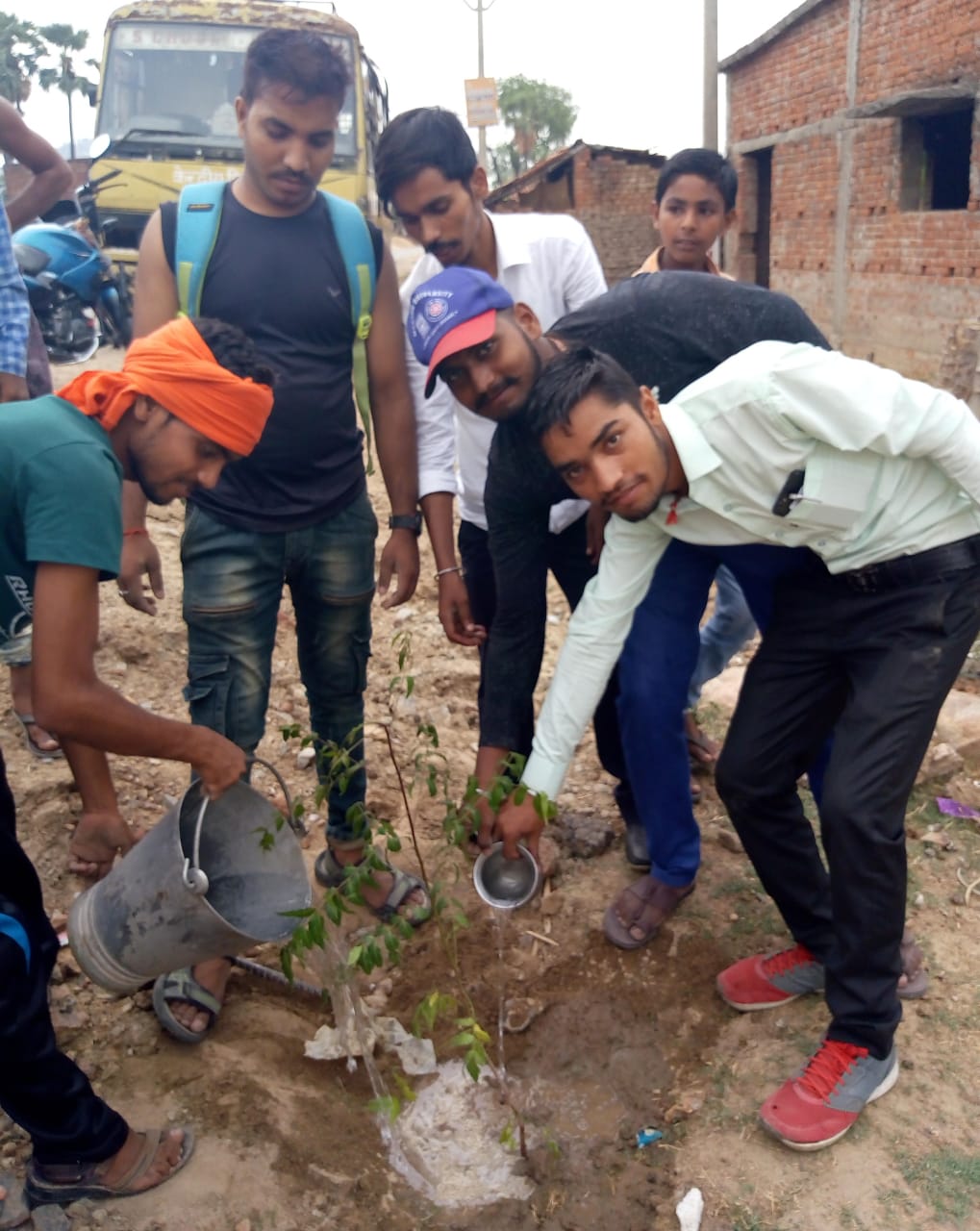
- Our Planet:This Emphasizes The Collective Ownership And Stewardship Of Earth, Highlighting That The Planet Belongs To All Of Humanity, And We Share A Mutual Duty To Care For Its Environment And Ecosystems.
- Our Future:It Underscores The Interconnectedness Of The Environment With Humanity's Future. A Healthy Planet Ensures A Sustainable And Thriving Future For Generations To Come, Making Environmental Preservation A Priority For Global Well-Being.
- Our Responsibility:This Phrase Calls For Collective Action And Accountability. It Signifies That Protecting And Nurturing The Planet Is Not Just A Choice But A Shared Obligation For Every Individual, Organization, And Society As A Whole.
Together, The Tagline Reflects A Sense Of Unity, Urgency, And Accountability, Inspiring Individuals And Communities To Take Proactive Steps In Protecting The Environment For A Sustainable And Harmonious Future. It Aligns With The Core Values Of Aadarsh Yuva Mission Human Welfare India By Fostering A Vision Of A Responsible And Equitable World.
Background And Justification For "Mission Nature For Future
"Mission Nature For Future" By Aadarsh Yuva Mission Human Welfare India Is A Visionary Initiative Designed To Address The Escalating Environmental Crises And Promote Sustainable Development. In Alignment With Global Priorities, Including The United Nations Sustainable Development Goals (Sdgs), This Initiative Seeks To Create A Balanced Ecosystem That Supports Both Human Well-Being And Environmental Preservation.
Background
Environmental Degradation Has Reached Critical Levels Due To Deforestation, Urbanization, Pollution, And Climate Change. India, As One Of The World's Fastest-Growing Economies, Faces Challenges Like Air And Water Pollution, Loss Of Biodiversity, And The Impacts Of Global Warming, Such As Extreme Weather Events And Rising Sea Levels. These Issues Threaten Not Only Ecological Stability But Also Food Security, Public Health, And Economic Development.Youth, Representing The Majority Of India's Population, Play A Pivotal Role In Shaping A Sustainable Future. "Mission Nature For Future" Aims To Harness Their Potential To Drive Change AndFoster A Culture Of Environmental Stewardship.
Justification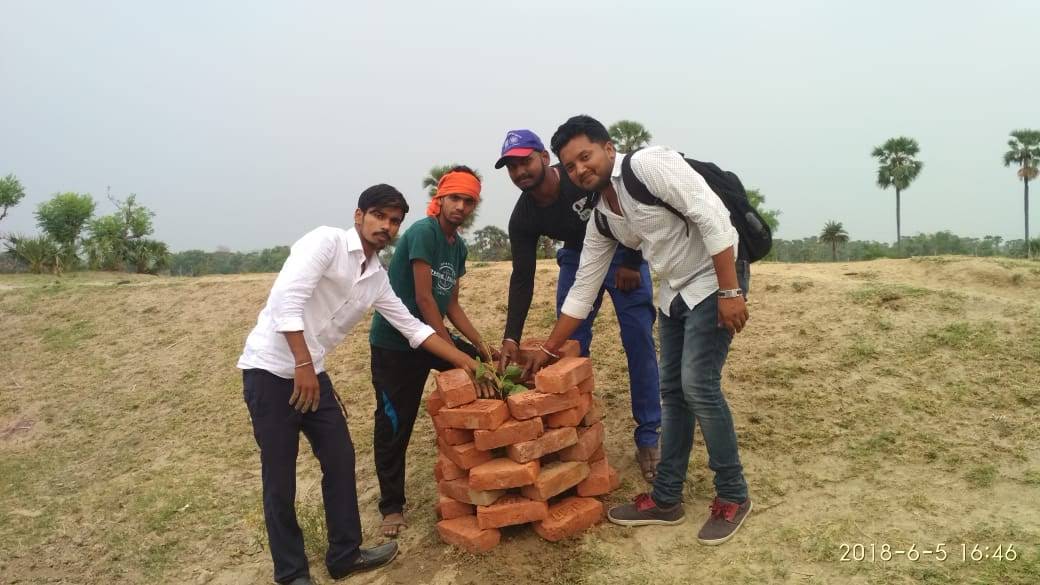
- Aligning With Global Goals:
The Initiative Aligns With Sdgs 13 (Climate Action), 15 (Life On Land), And 6 (Clean Water And Sanitation), Reinforcing India's Commitment To Global Environmental Targets. - Biodiversity Conservation:
With India Hosting 7-8% Of The World's Biodiversity, Protecting Flora And Fauna Is Critical To Sustaining Ecological Balance And Promoting Eco-Tourism. - Combating Pollution:
The Mission Addresses Air, Water, And Soil Pollution Through Clean-Up Drives, Afforestation Campaigns, And Awareness Programs, Fostering Healthier Living Conditions. - Empowering Communities:
It Emphasizes Community Participation, Particularly In Rural And Urban Areas, Ensuring That Environmental Solutions Are Inclusive And Locally Relevant. - Educational Outreach:
Raising Awareness About Environmental Issues In Schools And Colleges Helps Instill Sustainable Practices Among Young People, Creating A Ripple Effect Across Generations. - Mitigating Climate Change:
Through Afforestation, Renewable Energy Promotion, And Waste Management Initiatives, The Project Contributes To Reducing Carbon Footprints And Building Climate Resilience. - In A Pilot Project Under This Initiative, A Community In Uttarakhand Was Engaged In Reforestation Activities On Barren Lands Prone To Landslides. Youth Volunteers, Along With Local Residents, Planted Over 10,000 Native Trees. The Analysis Revealed Multiple Benefits:
- Environmental Impact: Increased Green Cover Reduced Soil Erosion And Enhanced Biodiversity.
- Community Benefits: Villagers Reported Improved Agricultural Productivity Due To Better Soil Health.
- Awareness Creation: The Project Inspired Nearby Communities To Undertake Similar Efforts.
- This Example Underscores How Localized Actions, When Systematically Implemented, Can Address Broader Environmental Issues And Generate Socio-Economic Benefits.
- "Mission Nature For Future" Reflects Aadarsh Yuva Mission Human Welfare India's Dedication To Fostering A Sustainable Future. By Combining Grassroots Efforts With Strategic Goals, The Initiative Serves As A Beacon Of Hope For Reversing Environmental Damage And Inspiring Collective Responsibility For Our Planet.
- Why The Initiative "Mission Nature For Future?

- " By Aadarsh Yuva Mission Human Welfare India Aims To Address Environmental Challenges And Promote Sustainability.
- Focus On Environmental Protection: The Initiative Seeks To Safeguard The Environment And Preserve Natural Resources For Future Generations.
- Promote Sustainability: Encourages Sustainable Practices In Everyday Life, Including Waste Reduction, Recycling, And Eco-Friendly Living.
- Combat Climate Change: Takes Action Against Climate Change By Reducing Carbon Footprints And Supporting Clean Energy.
- Support Biodiversity Conservation: Protects Endangered Species And Their Habitats, Ensuring Ecological Balance.
- Public Awareness: Educates Communities On The Importance Of Protecting Nature And Adopting Green Practices.
- Collaborative Efforts: Partners With Local Organizations, Businesses, And Governments To Drive Large-Scale Environmental Change.
- Youth Engagement: Empowers The Youth To Take Active Roles In Protecting The Environment Through Awareness Campaigns And Community Actions.
- The Need For"Mission Nature For Future"
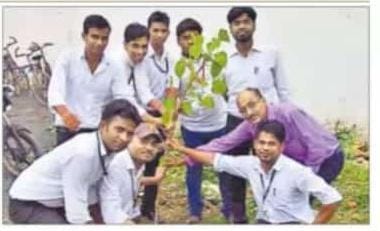
- The Need For "Mission Nature For Future" By Aadarsh Yuva Mission Human Welfare India Stems From The Pressing Environmental Challenges That Threaten Our Planet And Future Generations. Here Are Key Reasons Highlighting The Importance Of This Initiative:
- Environmental Degradation: Rapid Industrialization, Deforestation, Pollution, And Overexploitation Of Resources Have Led To Severe Environmental Degradation, Threatening Ecosystems And Biodiversity.
- Climate Change: Rising Global Temperatures, Extreme Weather Events, And The Melting Of Polar Ice Caps Are Direct Consequences Of Climate Change. Addressing This Urgent Issue Is Crucial For The Survival Of All Species On Earth.
- Resource Depletion: Overconsumption Of Natural Resources Such As Water, Fossil Fuels, And Forests Is Unsustainable, Leading To Scarcity And Creating Long-Term Economic And Environmental Challenges.
- Biodiversity Loss: Habitat Destruction, Poaching, And Pollution Have Caused A Dramatic Decline In Biodiversity, Endangering Numerous Species And Affecting The Balance Of Ecosystems.
- Youth Involvement: Engaging The Younger Generation In Environmental Activism Is Critical To Create Lasting Change. The Youth Are Powerful Agents Of Change And Need To Be Equipped With Knowledge And Motivation To Take Responsibility For Environmental Sustainability.
- Health And Well-Being: A Degraded Environment Directly Impacts Public Health, Leading To Air And Water Pollution-Related Diseases, Mental Health Issues, And Other Health Crises. A Cleaner Environment Ensures Better Living Conditions For All.
- Intergenerational Responsibility: There Is A Moral Obligation To Protect The Planet For Future Generations. Taking Action Today Will Ensure That The Planet Remains Habitable, Providing Resources For Future Generations To Thrive.
- Mission Nature For Future Seeks To Address These Critical Challenges By Promoting Environmental Stewardship, Sustainable Practices, And Global Cooperation For The Benefit Of The Planet And Its Inhabitants.
- The"Mission Nature For Future"Matters
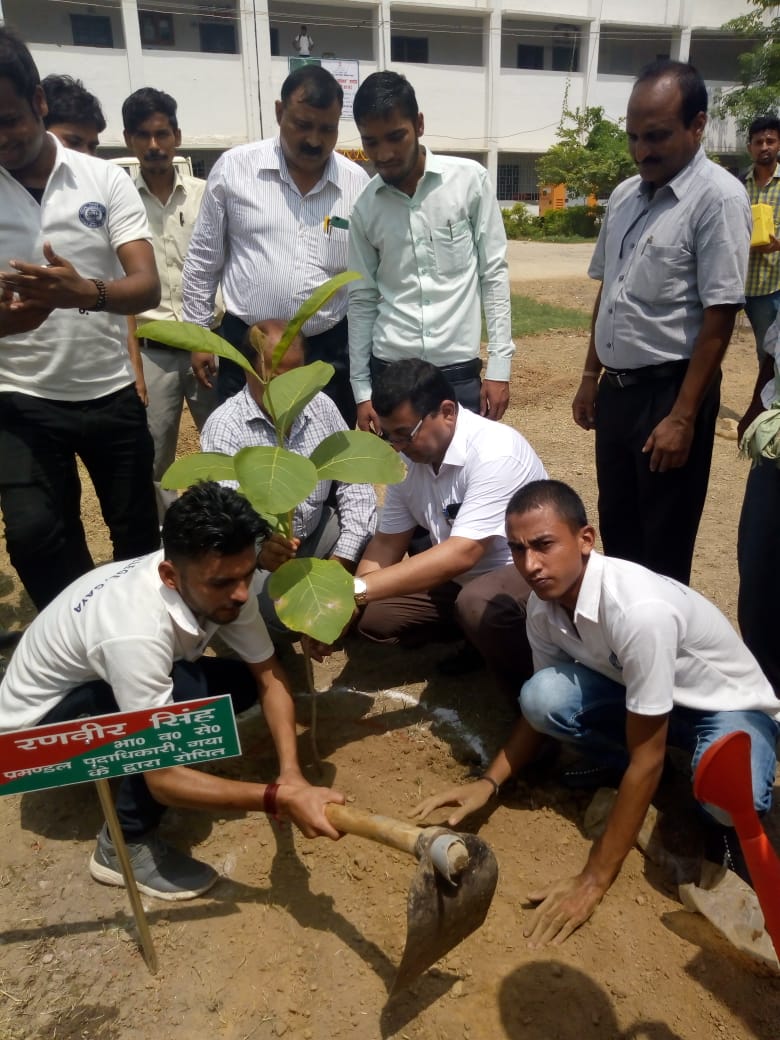
- Environmental Crisis Awareness: It Addresses The Growing Environmental Crisis, Including Climate Change, Deforestation, Pollution, And The Loss Of Biodiversity, Which Threatens The Planet’s Sustainability.
- Youth Engagement: The Initiative Empowers The Younger Generation To Become Proactive Environmental Leaders, Ensuring That The Solutions To Today's Environmental Issues Are Carried Forward In The Future.
- Promoting Sustainable Practices: It Encourages Individuals And Communities To Adopt Environmentally Friendly Practices, Such As Waste Reduction, Energy Conservation, And Sustainable Agriculture, Fostering A Greener Way Of Life.
- Building A Better Future: By Focusing On Protecting Natural Resources And Ecosystems, The Initiative Helps Secure A Healthier, More Sustainable Future For All Generations.
- Support For Global Goals: It Aligns With The United Nations Sustainable Development Goals (Sdgs), Especially Those Focused On Climate Action, Clean Water And Sanitation, Life On Land, And Life Below Water.
- Global Impact: The Initiative’s Impact Extends Beyond India, Contributing To Global Environmental Movements And Addressing Urgent Issues Like Global Warming, Air Pollution, And Habitat Destruction.
- Holistic Approach: It Incorporates Not Just Environmental Conservation But Also Social Aspects, Like Educating And Engaging Communities, Ensuring That All Sectors Of Society Are Part Of The Solution.
- The Initiative Is Vital For Ensuring The Long-Term Health Of The Planet And For Leaving A Thriving Ecosystem For Future Generations, Reinforcing The Idea That Environmental Responsibility Is Everyone's Duty.
- What Makes The"Mission Nature For Future"Different?
- Youth-Centered Approach: Unlike Many Environmental Initiatives, "Mission Nature For Future" Focuses Heavily On Engaging Young People. By Involving The Youth As Environmental Leaders And Change-Makers, The Initiative Ensures Long-Term Sustainability And A Future Generation That Prioritizes Nature.
- Holistic Focus: The Initiative Doesn't Just Address Environmental Protection But Also Incorporates Social Dimensions. It Promotes Eco-Friendly Lifestyles, Tackles Waste Management Issues, Advocates For Renewable Energy, And Educates Communities On The Interdependence Between Environmental And Social Health.
- Community Empowerment: It Empowers Local Communities By Involving Them In Hands-On Activities Like Tree Planting, Waste Recycling Programs, And Clean-Up Drives, Ensuring That Sustainability Is A Part Of Everyday Life At The Grassroots Level.
- Collaboration With Multiple Stakeholders: The Initiative Fosters Partnerships With Not Only Environmental Groups But Also Local Businesses, Government Agencies, And Educational Institutions, Creating A Collaborative Platform To Implement Large-Scale, Impactful Change.
- Emphasis On Education And Awareness: While Many Initiatives Focus Solely On Action, "Mission Nature For Future" Places A Strong Emphasis On Educating The Public—Especially Youth—On The Importance Of Conservation, Sustainable Practices, And Their Role In Shaping The Future.
- Alignment With Global Goals: The Initiative Is Deeply Rooted In The Global Vision Set By The United Nations Sustainable Development Goals (Sdgs), Ensuring Its Relevance On A Worldwide Scale, While Also Focusing On India’s Unique Environmental Challenges.
- Long-Term Vision: "Mission Nature For Future" Takes A Long-Term Approach, Aiming To Create Lasting Change Rather Than Short-Term Solutions. It’s Not Just About Immediate Action But About Cultivating Habits And Mindsets That Will Benefit The Environment For Generations To Come.
- Inclusive Participation: The Initiative Ensures Inclusivity By Making Environmental Conservation Accessible To People From All Walks Of Life, Especially Marginalized Communities Who Are Often The Most Affected By Environmental Degradation.
- These Factors Make "Mission Nature For Future" Stand Out As A Comprehensive, Youth-Driven, And Socially Responsible Environmental Initiative That Goes Beyond Mere Awareness And Encourages Tangible, Lasting Change.
- The Mission Of The "Mission Nature For Future"
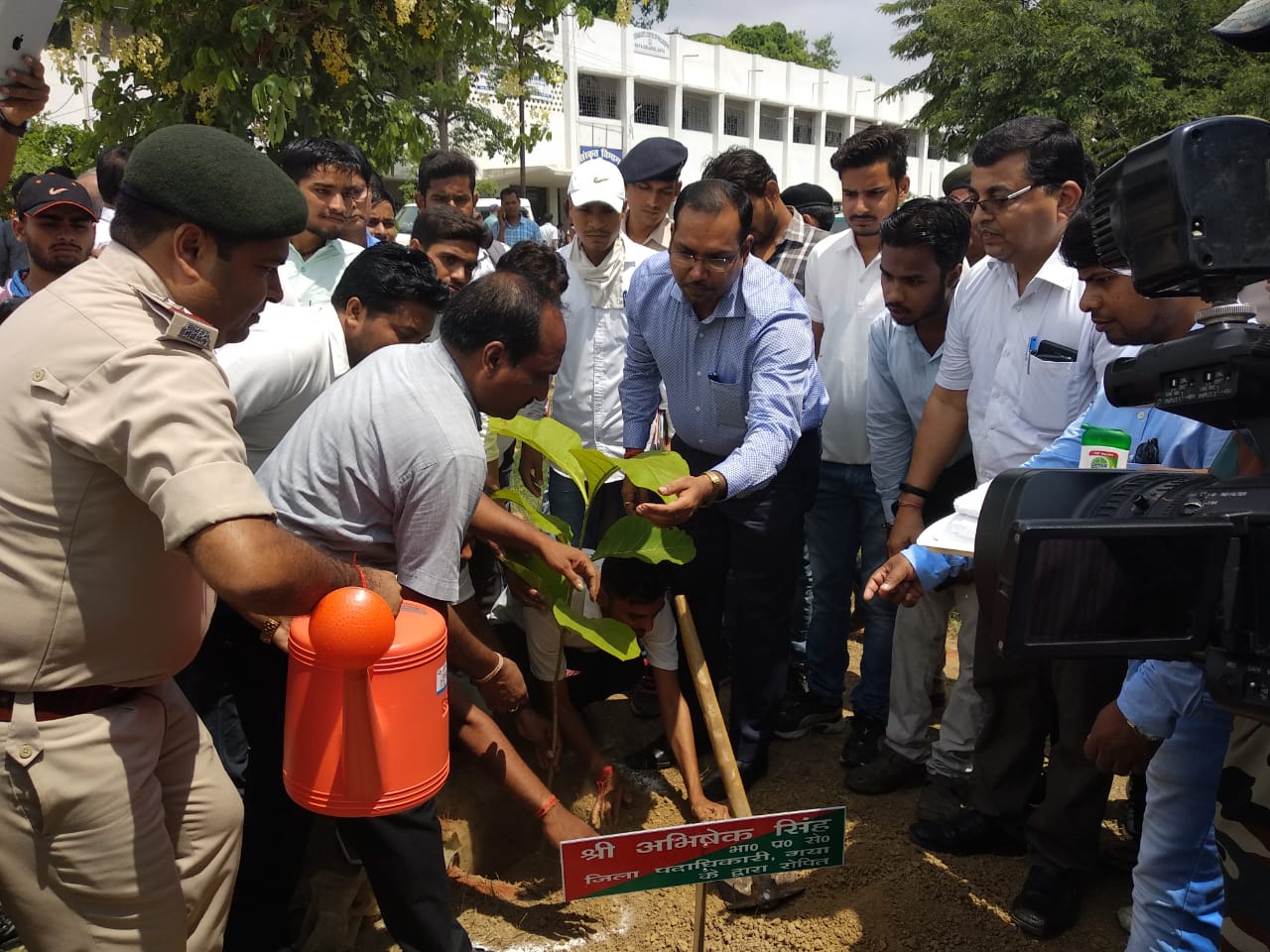
The Mission Of The "Mission Nature For Future" Initiative By Aadarsh Yuva Mission Human Welfare India Is To Create A Sustainable And Environmentally Conscious Future By Promoting The Protection And Preservation Of Nature. This Initiative Seeks To Inspire Individuals, Especially The Youth, To Take Responsibility For The Planet And Actively Engage In Practices That Combat Environmental Degradation. By Focusing On Key Areas Such As Climate Change, Biodiversity Conservation, Waste Management, And Sustainable Living, The Initiative Aims To Safeguard Natural Resources For Future Generations. - Through A Variety Of Campaigns, Community Projects, And Educational Programs, Mission Nature For Future Strives To Raise Awareness About The Urgency Of Addressing Environmental Challenges. It Encourages People To Adopt Eco-Friendly Practices, From Reducing Waste And Recycling To Supporting Renewable Energy And Conserving Water. The Initiative Also Highlights The Importance Of Protecting Endangered Species And Restoring Ecosystems, Fostering A Healthy Balance Between Human Development And Nature.
- By Engaging With Local Communities, Schools, And Businesses, Mission Nature For Future Hopes To Build A Collective Movement That Transcends Borders And Ensures A Better, Cleaner World For All. It Emphasizes That Environmental Protection Is Not Just A Responsibility But A Shared Duty For Every Individual, Community, And Nation, Reinforcing The Message That "Our Planet, Our Future, Our Responsibility."
- The Vision Of The "Mission Nature For Future
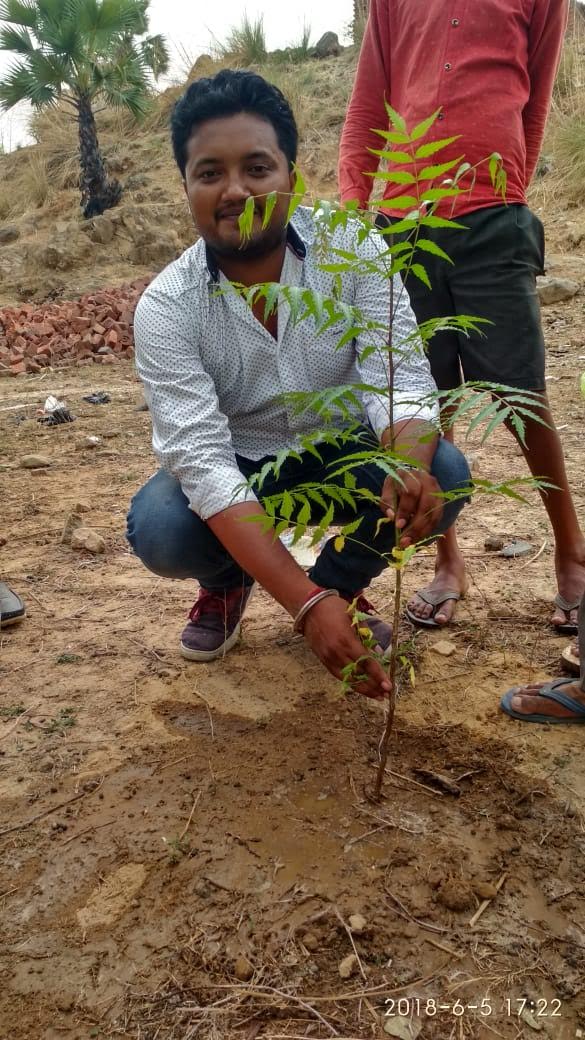
- The Vision Of The "Mission Nature For Future" Initiative By Aadarsh Yuva Mission Human Welfare India Is To Create A Sustainable And Harmonious Relationship Between Humans And Nature, Ensuring That The Natural Resources Of The Earth Are Preserved For Future Generations. With The Increasing Challenges Of Climate Change, Pollution, And Environmental Degradation, The Initiative Envisions A Future Where Every Individual, Community, And Organization Actively Participates In Safeguarding The Environment. It Seeks To Inspire And Empower Youth, Communities, And Policymakers To Adopt Eco-Friendly Practices And Innovative Solutions To Tackle Environmental Issues. The Vision Includes Reducing Carbon Footprints, Conserving Biodiversity, Promoting Renewable Energy, And Fostering A Culture Of Sustainability Through Education And Awareness Campaigns.
- "Mission Nature For Future" Aims To Make Environmental Conservation A Collective Effort, Integrating It Into The Fabric Of Everyday Life. By Focusing On Sustainable Development, Responsible Consumption, And Protecting Ecosystems, The Initiative Strives To Ensure That Future Generations Inherit A Cleaner, Healthier Planet. It Envisions A World Where Sustainable Development And Environmental Protection Are At The Core Of All Societal Actions, Aligning With The United Nations Sustainable Development Goals (Sdgs). Ultimately, The Vision Is To Create A Global Movement That Prioritizes Nature, Empowers Individuals To Act, And Secures A Future Where The Planet Thrives For Centuries To Come.
- Objectives Of The "Mission Nature For Future"

- Raise Environmental Awareness: Educate Communities About The Importance Of Environmental Conservation And Sustainable Practices.
- Promote Sustainability: Encourage Sustainable Living, Including Energy Conservation, Reducing Waste, And Promoting The Use Of Renewable Resources.
- Fight Climate Change: Take Actionable Steps To Mitigate Climate Change Through Tree Planting, Carbon Footprint Reduction, And Advocacy For Green Energy Solutions.
- Promote Afforestation: Organize Large-Scale Tree Planting Campaigns To Restore Forests And Combat Deforestation.
- Protect Endangered Species: Conserve Biodiversity By Protecting Endangered Species And Their Habitats.
- Reduce Pollution: Take Action Against Air, Water, And Land Pollution By Promoting Eco-Friendly Practices Like Recycling, Waste Segregation, And Reduction Of Plastic Usage.
- Preserve Water Resources: Encourage Water Conservation Techniques And Reduce Water Wastage In Both Urban And Rural Areas.
- Promote Circular Economy: Advocate For A Circular Economy Where Resources Are Reused, Recycled, And Repurposed To Minimize Waste.
- Empower Youth: Engage Young People In Environmental Projects And Empower Them To Become Leaders In Sustainability Efforts.
- Educate On Renewable Energy: Promote The Use Of Renewable Energy Sources Such As Solar, Wind, And Hydroelectric Power.
- Support Green Technology: Advocate For And Facilitate The Adoption Of Green Technologies That Reduce Environmental Impacts.
- Promote Organic Farming: Encourage The Use Of Organic And Sustainable Farming Methods To Protect Soil Health And Biodiversity.
- Clean Up Campaigns: Organize Community Clean-Up Drives To Remove Litter From Public Spaces, Rivers, And Beaches.
- Reduce Plastic Usage: Initiate And Support Campaigns To Reduce Single-Use Plastics And Encourage Biodegradable Alternatives.
- Advocate For Green Infrastructure: Support The Development Of Green Buildings, Sustainable Urban Planning, And Eco-Friendly Transportation.
- Foster Collaboration: Build Partnerships With Governments, Businesses, Ngos, And Other Organizations To Amplify The Impact Of Environmental Protection Efforts.
- Encourage Green Education: Integrate Environmental Education Into School Curricula And Offer Training Programs For Adults To Build Green Skills.
- Promote Eco-Tourism: Encourage Eco-Friendly Tourism That Respects And Preserves Natural Habitats.
- Restore Degraded Lands: Work On Projects To Restore Degraded Ecosystems And Rehabilitate Lands That Have Been Harmed By Human Activity.
- Support Wildlife Conservation: Raise Awareness And Provide Resources For Wildlife Protection, Including Setting Up Wildlife Corridors And Reserves.
- Advocate For Sustainable Policy: Work With Policymakers To Implement Environmental Laws And Regulations That Promote Sustainability.
- Promote Local Food Systems: Support Local, Organic, And Sustainable Food Production To Reduce Carbon Footprints Related To Transportation And Industrial Agriculture.
- Educate On Green Certifications: Provide Knowledge On Eco-Labeling And Certifications For Products That Meet Sustainability Standards.
- Engage Communities: Organize Local Events, Workshops, And Seminars To Foster Community Involvement In Environmental Protection.
- Build Green Habits: Encourage The Adoption Of Green Habits Such As Reducing Waste, Conserving Water, And Making Eco-Conscious Purchases.
- Monitor Environmental Impact: Conduct Research And Assessments To Track The Effectiveness Of Environmental Policies, Campaigns, And Practices.
- Promote Resilient Ecosystems: Work Towards Creating Resilient Ecosystems That Can Withstand The Impacts Of Climate Change.
- Support Sustainable Transportation: Encourage The Use Of Public Transportation, Cycling, Walking, And Electric Vehicles To Reduce Carbon Emissions.
- Raise Funds For Environmental Projects: Fundraise For Environmental Protection Projects, Including Restoration And Conservation Efforts.
- Foster Global Solidarity: Connect With International Organizations And Environmental Groups To Collaborate On Global Sustainability Issues And Solutions.
- These Objectives Collectively Aim To Create A Greener, Cleaner, And More Sustainable Future By Mobilizing Communities, Promoting Policy Change, And Engaging The Younger Generation In Active Environmental Protection.
- The Scope And Approach Of The "Mission Nature For Future"
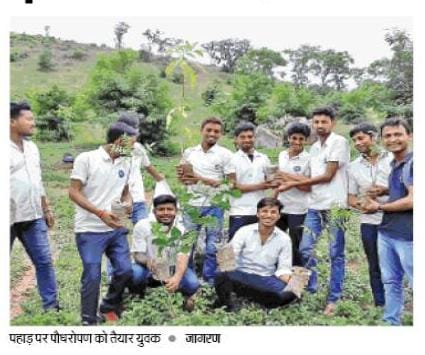
- Scope
- Widespread Awareness Campaigns:
- Educate Individuals, Communities, And Organizations On Environmental Issues Such As Climate Change, Waste Management, Deforestation, And Pollution.
- Create Educational Programs Targeting Schools, Colleges, And Youth Groups To Instill Eco-Friendly Habits Early On.
- Sustainability Practices:
- Promote Practices Such As Recycling, Waste Reduction, Sustainable Farming, Renewable Energy Adoption, And Water Conservation Across Various Sectors.
- Support Local Businesses In Adopting Green Technologies And Eco-Friendly Practices.
- Community Engagement:
- Collaborate With Local Communities To Implement Environmental Projects Such As Tree Plantations, Waste Cleanups, And Eco-Friendly Product Promotion.
- Engage With Grassroots Organizations To Build A Network Of Environmental Advocates.
- Partnerships And Collaborations:
- Work With Governmental Bodies, Environmental Organizations, And Corporate Entities To Scale Up Efforts And Implement Large-Scale Environmental Solutions.
- Foster Partnerships With Ngos, Experts, And Local Leaders For A Collaborative Approach Toward Environmental Sustainability.
- Global Impact:
- Align With International Environmental Goals, Such As The United Nations’ Sustainable Development Goals (Sdgs), Particularly Goals Focused On Climate Action, Life On Land, And Life Below Water.
- Innovation And Research:
- Promote Research On Sustainable Technologies, Pollution Control, And Eco-Friendly Practices To Drive Innovation In Environmental Solutions.
- Support Projects Aimed At Developing New Methods For Mitigating Climate Change And Preserving Biodiversity.
- Approach
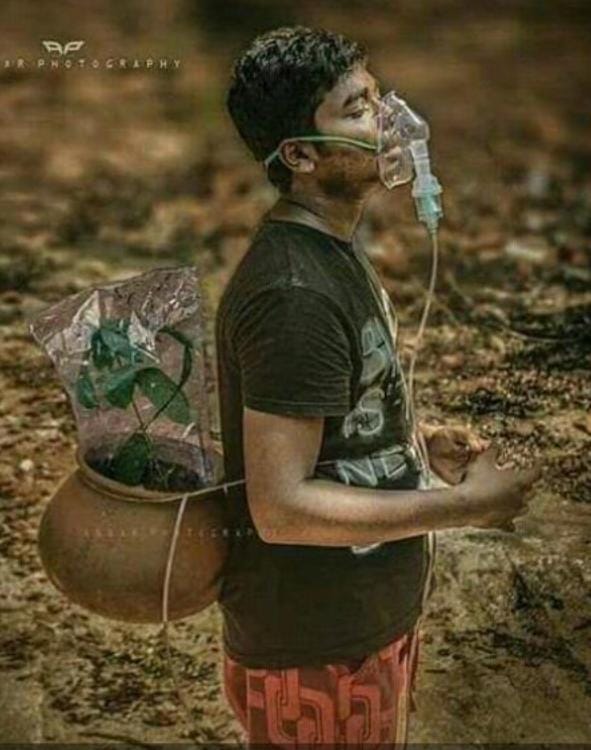
- Youth-Led Advocacy:
- Mobilize Youth Through Campaigns, Workshops, And Community Outreach Programs To Take The Lead In Environmental Action.
- Leverage Social Media And Digital Platforms To Spread Awareness And Engage Younger Audiences.
- Holistic Solutions:
- Adopt A Multi-Dimensional Approach By Combining Education, Hands-On Projects, Policy Advocacy, And Innovation To Address Environmental Challenges.
- Focus On Both Local Actions And Global Initiatives To Create A Broad Impact.
- Sustainable Development:
- Promote Sustainable Development That Balances Environmental, Economic, And Social Needs, Ensuring Long-Term Sustainability Without Compromising Future Generations' Ability To Meet Their Own Needs.
- Inclusive And Participatory:
- Involve All Stakeholders, From Government And Businesses To Local Communities, In Decision-Making And Implementation.
- Ensure That Marginalized And Vulnerable Groups Are Also Included In Sustainability Efforts.
- Empowering Communities:
- Focus On Community-Based Solutions That Encourage Collective Responsibility, From Urban Areas To Rural Settings.
- Strengthen Community Involvement In Conservation Efforts, Such As Tree Planting, Waste Management, And Eco-Tourism.
- Monitoring And Impact Assessment:
- Implement Systems To Track Progress, Measure Impact, And Assess The Effectiveness Of Projects And Programs.
- Regularly Evaluate Initiatives To Ensure They Are Meeting The Environmental And Social Goals Set Out By The Mission.
- Through This Inclusive, Innovative, And Youth-Driven Approach, Mission Nature For Future Aims To Create Lasting Environmental Change, Promote Sustainable Development, And Protect The Planet For Future Generations.
- Services Provided By Mission Nature For Future"Initiative
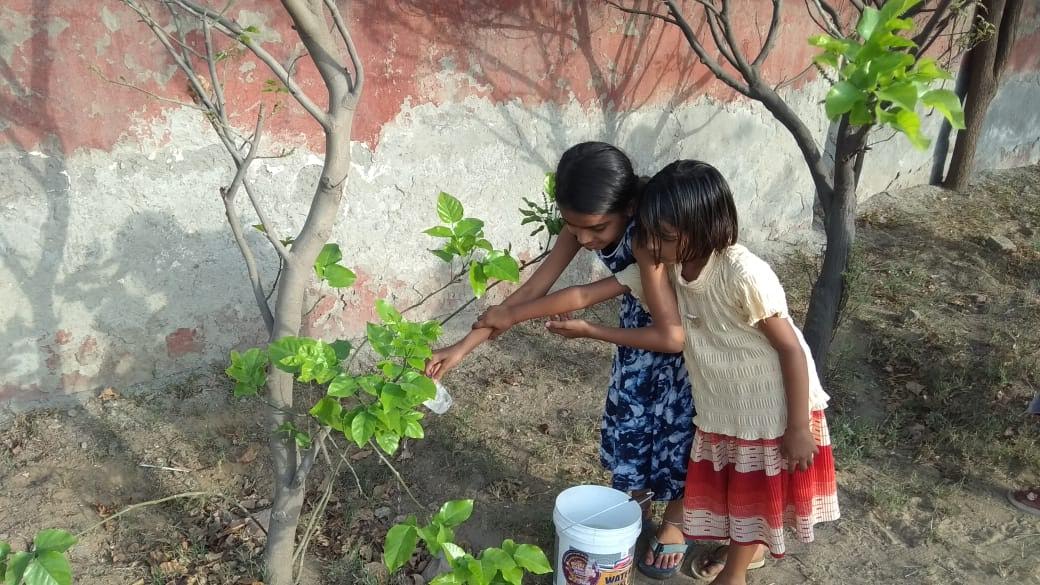
- The "Mission Nature For Future" Initiative By Aadarsh Yuva Mission Human Welfare India Provides A Range Of Services Aimed At Environmental Conservation And Sustainability. These Services Include:
- Environmental Awareness Campaigns:
- Educating Communities About The Importance Of Environmental Protection.
- Conducting Workshops, Seminars, And Outreach Programs To Raise Awareness On Topics Like Climate Change, Waste Management, And Biodiversity.
- Tree Plantation Drives:
- Organizing Tree Planting Events To Combat Deforestation, Restore Ecosystems, And Increase Green Cover In Urban And Rural Areas.
- Sustainable Waste Management:
- Promoting Waste Reduction, Recycling, And Composting In Communities And Schools.
- Setting Up Awareness Campaigns On The Dangers Of Single-Use Plastics And Encouraging Alternatives.
- Energy Conservation Programs:
- Promoting The Use Of Renewable Energy Sources, Such As Solar Power, And Energy-Efficient Technologies To Reduce Carbon Footprints.
Water Conservation Initiatives:
Educating Communities About Water-Saving Techniques And The Importance Of Conserving Water Resources.
Setting Up Water Harvesting Systems And Promoting The Responsible Use Of Water In Households And Industries.
- Biodiversity Protection:
- Organizing Conservation Programs To Protect Endangered Species And Their Habitats.
- Supporting Wildlife Preservation Efforts And Advocating For Policies That Protect Biodiversity.
- Green Certification And Recognition:
- Recognizing And Certifying Individuals, Organizations, Or Businesses That Adopt Sustainable Practices And Contribute To Environmental Conservation.
- Community Engagement Programs:
- Involving Local Communities In Environmental Protection Efforts Through Volunteering, Cleanup Drives, And Eco-Friendly Initiatives.
- Advocacy And Policy Support:
- Working With Government Bodies, Ngos, And Private Sectors To Advocate For Environmental Policies And Sustainable Practices At The National And Local Levels.
- Youth Leadership Development::Training Young Individuals To Become Environmental Leaders And Change-Makers In Their Communities, Guiding Them To Lead Future Initiatives.
- These Services Help In Building A Sustainable, Eco-Friendly Future By Actively Involving Communities And Promoting Responsible Practices To Protect The Planet.
- Activities Of Mission Nature For Future"Initiative
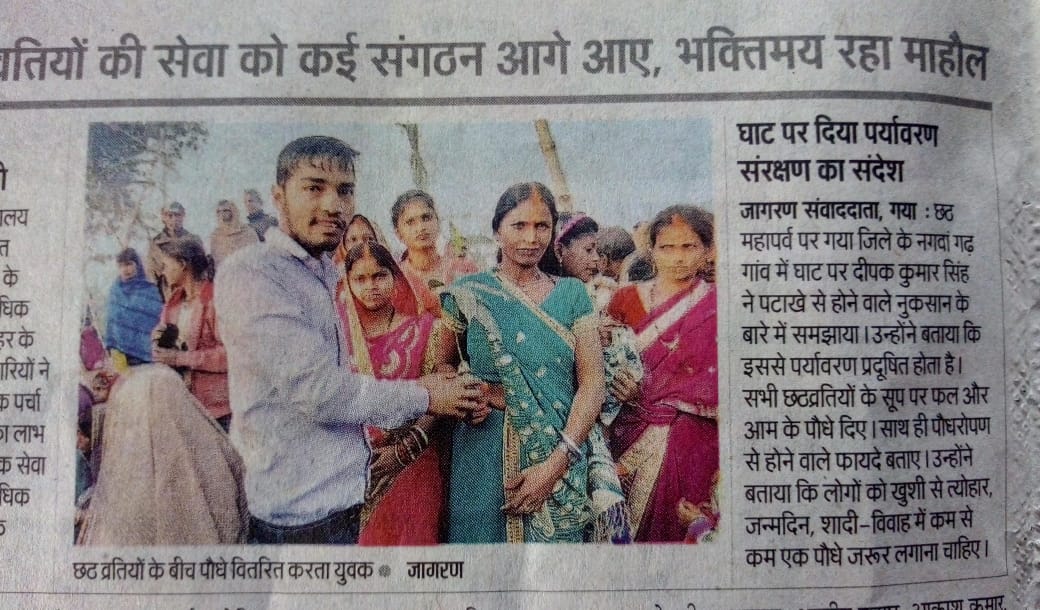
- The "Mission Nature For Future" Initiative Under Aadarsh Yuva Mission Human Welfare India Involves A Variety Of Impactful Activities Aimed At Environmental Conservation And Sustainability. Here Are Some Key Activities:
- Tree Plantation Drives: Organizing Large-Scale Tree Planting Events To Increase Green Cover, Restore Ecosystems, And Combat Deforestation.
- Awareness Campaigns: Conducting Public Awareness Programs, Workshops, And Seminars To Educate Communities About The Importance Of Environmental Conservation And The Impact Of Climate Change.
- Recycling And Waste Management: Promoting Waste Segregation, Recycling Initiatives, And Creating Awareness About Reducing Single-Use Plastics And Managing Household Waste Effectively.
- Water Conservation Projects: Implementing Water Conservation Strategies Like Rainwater Harvesting, Promoting The Use Of Water-Saving Technologies, And Educating Communities About The Importance Of Preserving Water Resources.
- Support For Renewable Energy: Encouraging The Use Of Clean Energy Solutions, Such As Solar, Wind, And Bioenergy, By Advocating For Policy Changes And Providing Resources For Sustainable Energy Options.
- Biodiversity Conservation: Working On Projects To Protect Endangered Species, Preserve Wildlife Habitats, And Promote Biodiversity Through Eco-Friendly Practices.
- Eco-Friendly Infrastructure Development: Partnering With Local Communities, Businesses, And Governments To Create Sustainable And Green Infrastructure, Such As Energy-Efficient Buildings And Sustainable Transportation Systems.
- Community Clean-Up Drives: Organizing Local Clean-Up Campaigns For Rivers, Beaches, Parks, And Urban Spaces To Reduce Pollution And Create Cleaner, Healthier Environments.
- Sustainable Agriculture Programs: Promoting Organic Farming, Agroforestry, And Sustainable Agricultural Practices To Reduce The Environmental Impact Of Traditional Farming.
- Youth Empowerment Programs: Engaging Youth Through Eco-Clubs, Volunteering Opportunities, And Youth-Led Environmental Advocacy Initiatives To Create Long-Term Environmental Leaders.
- Plastic-Free Campaigns: Raising Awareness And Working To Eliminate Plastic Use In Communities By Encouraging Alternatives Like Reusable Bags And Biodegradable Products.
- Tree And Wildflower Conservation: Promoting The Planting Of Native Trees And Wildflowers To Help Restore Local Ecosystems And Support Wildlife.
- These Activities, Driven By Local Communities And Youth, Collectively Work Toward Protecting The Environment, Conserving Resources, And Ensuring A Sustainable Future For Generations To Come.
- Target Beneficiaries Of The "Mission Nature For Future"
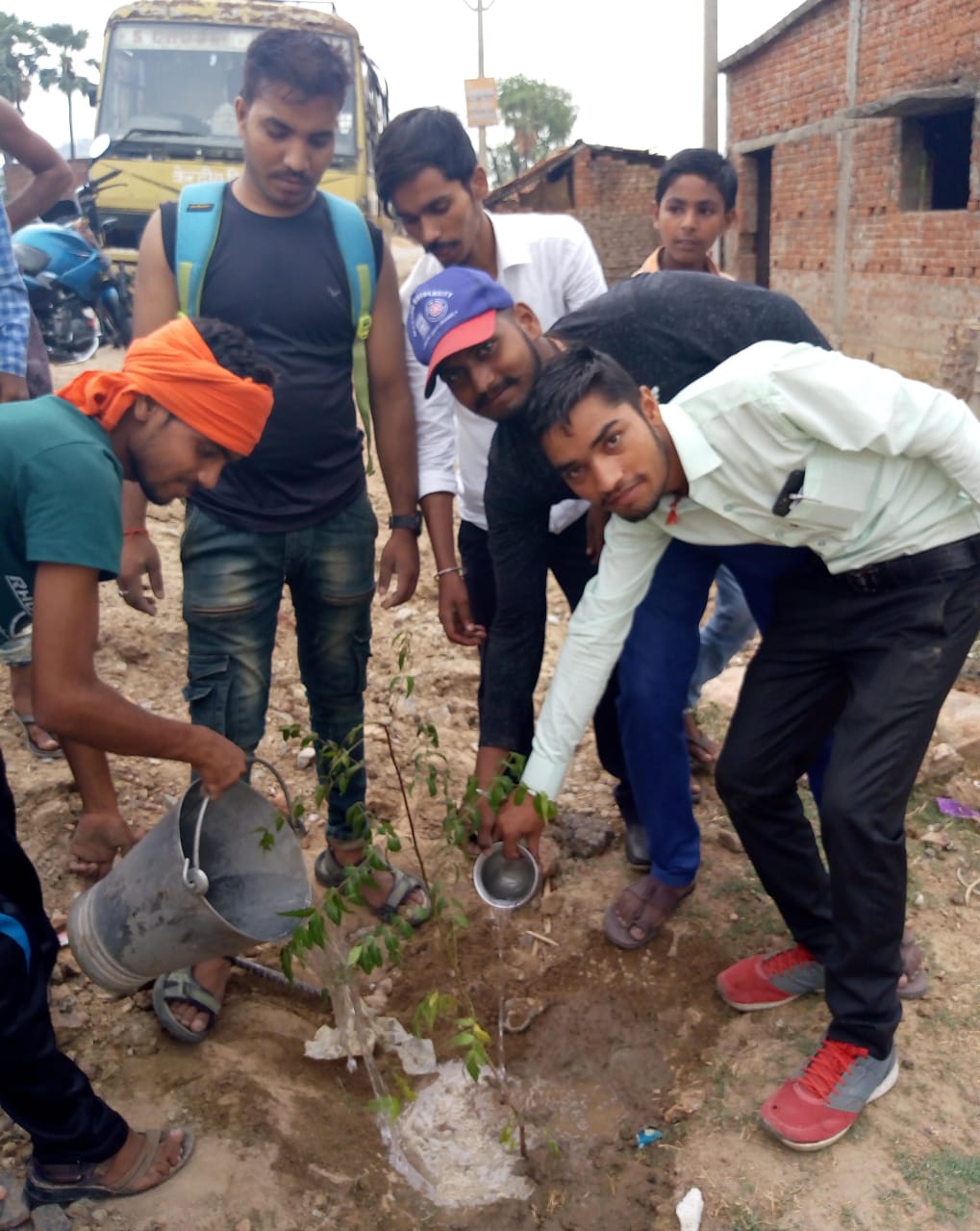
- Youth: Empowering The Younger Generation To Take Active Roles In Environmental Protection And Sustainability, Fostering Leadership For Future Environmental Movements.
- Local Communities: Educating And Involving Local Communities In Adopting Eco-Friendly Practices, Such As Waste Management, Water Conservation, And Sustainable Farming.
- Schools And Colleges: Raising Awareness Among Students About Environmental Issues And The Importance Of Sustainability, Through Workshops, Campaigns, And Educational Programs.
- Marginalized And Rural Populations: Reaching Out To Rural And Underserved Areas With Information On Sustainable Practices, Renewable Energy, And Environmental Protection To Improve Their Living Conditions.
- Environmental Enthusiasts And Activists: Providing A Platform For Environmental Advocates And Organizations To Collaborate, Share Knowledge, And Increase Their Collective Impact On Nature Conservation.
- Government And Policy Makers: Engaging Policymakers To Implement Sustainable Policies And Support Environmental Legislation That Helps Protect Natural Resources And Combat Climate Change.
- Businesses And Corporations: Encouraging Businesses To Adopt Sustainable Business Practices, Reduce Waste, And Lower Their Carbon Footprints, Promoting Corporate Social Responsibility.
- By Targeting These Groups, The Initiative Ensures A Broad, Inclusive Approach To Environmental Protection And Sustainability, Engaging Multiple Stakeholders In Safeguarding The Planet’s Future.
- Working Mechanism Of The"Mission Nature For Future"
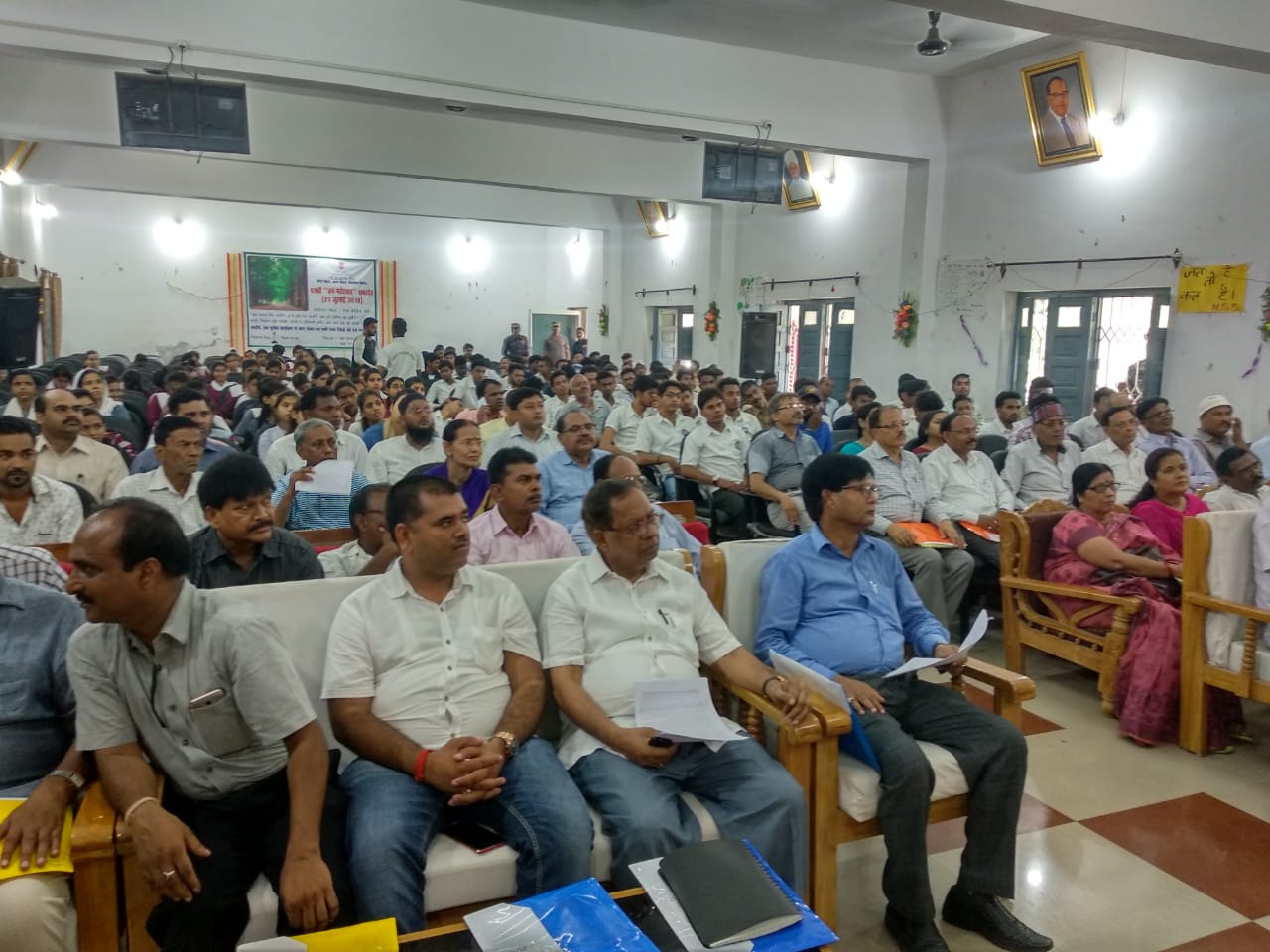
The Working Mechanism Of The "Mission Nature For Future" Initiative By Aadarsh Yuva Mission Human Welfare India Is Designed To Create Impactful Environmental Change Through A Variety Of Strategic Actions. Below Are The Key Mechanisms Along With Examples:
1. Awareness Campaigns And Education - Mechanism: Conducting Educational Workshops, Seminars, And Campaigns To Raise Awareness About Environmental Issues And Sustainable Practices.
- Example: Organizing Tree Plantation Drives And Awareness Programs In Schools, Colleges, And Local Communities, Educating The Public About The Importance Of Trees In Combating Climate Change.
- Community Engagement And Collaboration
- Mechanism: Collaborating With Local Communities, Environmental Groups, Government Bodies, And Businesses To Drive Collective Action.
- Example: Partnering With Local Businesses To Implement Recycling Programs, Where Communities Can Drop Off Plastic Waste, Which Will Then Be Recycled Or Repurposed.
- Youth Involvement And Leadership
- Mechanism: Encouraging Young People To Take Leadership Roles In Environmental Protection Activities.
- Example: Youth-Led Environmental Campaigns Like Beach Clean-Ups, Waste Segregation Initiatives, Or Renewable Energy Projects, Fostering A Sense Of Responsibility Among Young Participants.
- Sustainable Practices Promotion
- Mechanism: Advocating For The Adoption Of Sustainable Practices Such As Reducing Waste, Using Eco-Friendly Products, And Conserving Resources.
- Example: Encouraging The Use Of Reusable Bags And Containers In Local Markets, And Promoting The Installation Of Solar Panels In Communities To Reduce Dependence On Non-Renewable Energy.
- Eco-Friendly Projects And Initiatives
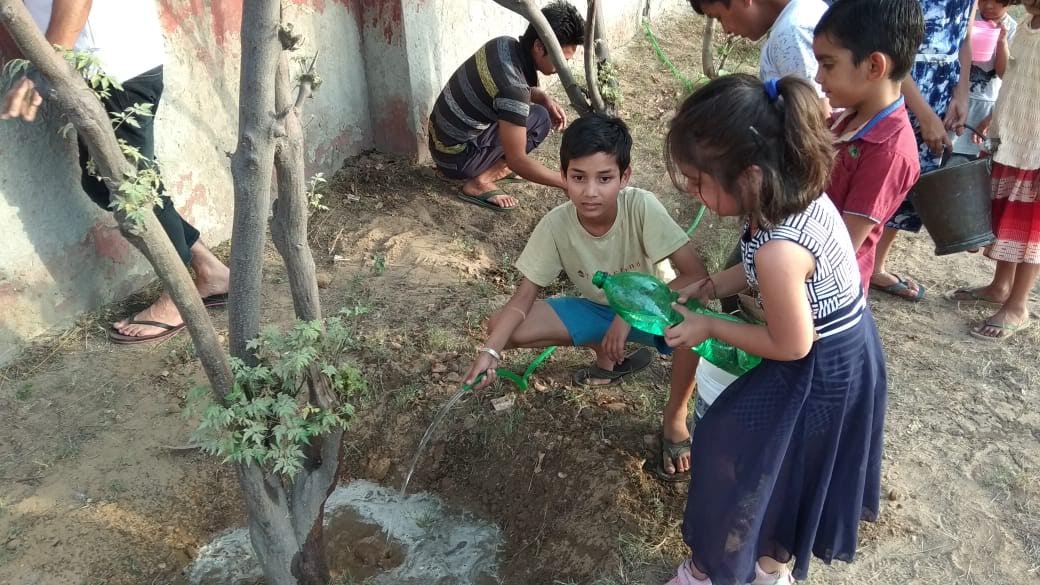
- Mechanism: Initiating And Supporting Projects Focused On Sustainability, Such As Renewable Energy, Water Conservation, And Biodiversity Preservation.
- Example: Setting Up Rainwater Harvesting Systems In Rural Areas To Reduce Water Scarcity Or Implementing Solar-Powered Streetlights In Urban Communities.
- Advocacy And Policy Influence
- Mechanism: Working With Policymakers And Local Authorities To Advocate For Policies That Promote Environmental Conservation.
- Example: Lobbying For Stricter Regulations On Industrial Pollution Or For The Development Of Green Spaces In Urban Areas To Improve Air Quality.
- Monitoring And Impact Assessment
- Mechanism: Continuously Monitoring The Environmental Impact Of The Initiatives And Assessing Their Effectiveness.
- Example: Tracking The Number Of Trees Planted And Their Survival Rate, Or Measuring The Reduction In Plastic Waste Through Community Recycling Efforts.
- Incentive Programs For Sustainability
- Mechanism: Providing Incentives For Individuals And Organizations That Adopt Sustainable Practices.
- Example: Offering Rewards Or Recognition To Schools, Businesses, And Local Governments That Demonstrate Outstanding Efforts In Reducing Their Environmental Footprint, Such As Reducing Plastic Use Or Improving Energy Efficiency.
- Partnerships And Collaborations
- Mechanism: Partnering With Environmental Ngos, Governmental Organizations, And Corporate Sponsors To Enhance Resources And Scale Efforts.
- Example: Collaborating With A Private Company To Fund The Installation Of Wind Turbines In Rural Areas, Thereby Providing A Renewable Energy Source And Creating Jobs.
- These Mechanisms Work Together To Create A Comprehensive Approach To Environmental Sustainability, Making "Mission Nature For Future" An Effective Initiative For Tackling Urgent Environmental Challenges While Promoting A Greener, More Sustainable Future.
- Tools And Resources For The "Mission Nature For Future" Initiative
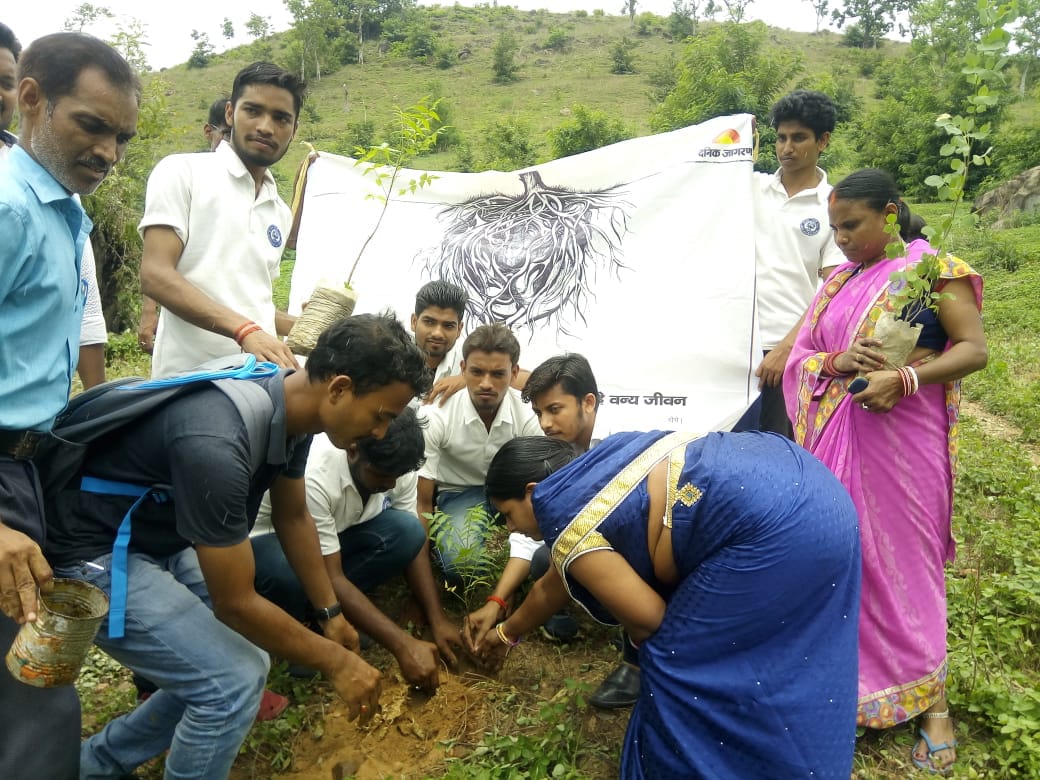
- Various Tools And Resources To Drive Its Goals Of Environmental Conservation And Sustainability.
1. Awareness Campaigns - Workshops And Seminars: Educational Sessions On Environmental Issues And Sustainable Practices.
- Social Media Campaigns: Spreading Awareness About Climate Change, Biodiversity, And Sustainable Living Through Digital Platforms.
- Partnerships And Collaborations
- Collaborations With Environmental Ngos: Working With Local And Global Environmental Organizations To Amplify Efforts.
- Corporate Partnerships: Engaging Businesses In Corporate Social Responsibility (Csr) Programs Focused On Sustainability.
- Government And Policy Advocacy: Collaborating With Governmental Bodies To Influence Environmental Policies And Initiatives.
- Community Engagement
- Volunteering Programs: Mobilizing Local Communities, Especially Youth, To Actively Participate In Clean-Up Drives, Tree Planting, And Conservation Efforts.
- Eco-Friendly Projects: Supporting Local Communities To Implement Sustainable Agriculture, Waste Management, And Renewable Energy Projects.
- Educational Resources: Providing Materials, Booklets, And Online Resources On Environmental Conservation.
- Sustainability Tools
- Carbon Footprint Calculators: Encouraging Individuals And Businesses To Calculate And Reduce Their Carbon Emissions.
- Waste Reduction Kits: Tools And Guides On Minimizing Waste, Recycling, And Composting.
- Green Technology Resources: Promoting Renewable Energy Technologies Such As Solar Power, Wind Energy, And Energy-Efficient Appliances.
- Tree Plantation And Ecosystem Restoration
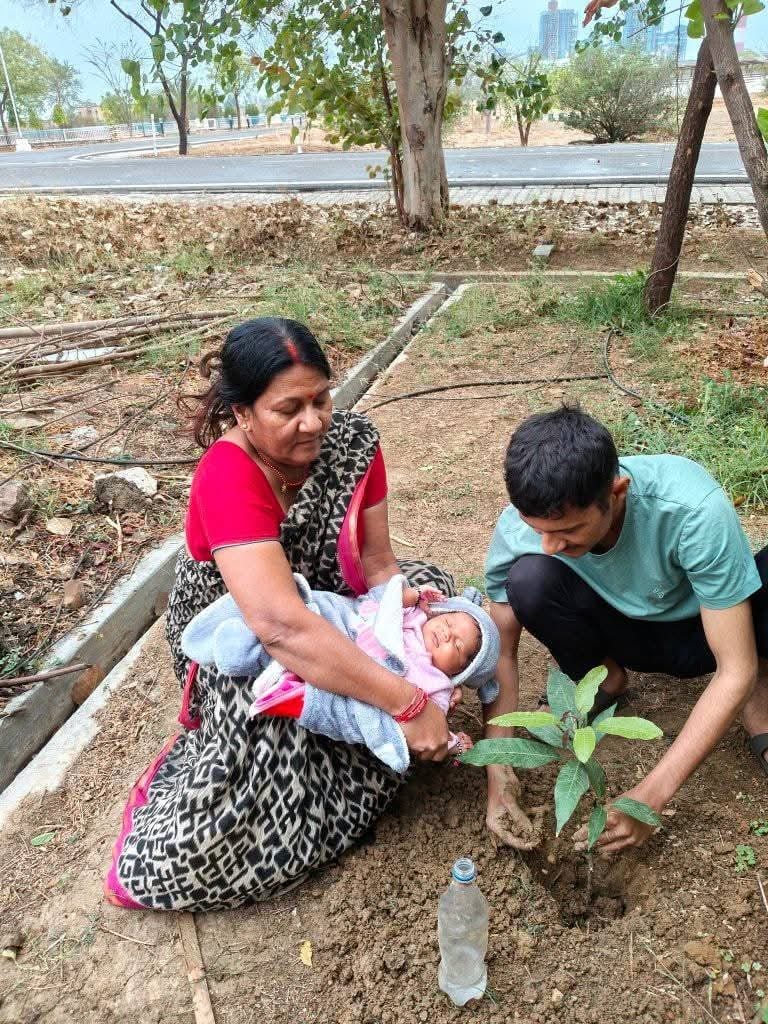
- Tree Plantation Drives: Organizing Mass Tree-Planting Campaigns In Urban And Rural Areas To Combat Deforestation.
- Habitat Restoration Projects: Restoring Damaged Ecosystems, Such As Wetlands, Forests, And Coastal Areas, To Support Biodiversity.
- Research And Data Collection
- Environmental Impact Assessments: Conducting Research On Local Environmental Issues, Such As Water Pollution Or Habitat Destruction.
- Sustainability Audits: Helping Businesses And Institutions Assess Their Environmental Impact And Improve Their Sustainability Practices.
- Fundraising And Donations
- Crowdfunding Platforms: Using Online Platforms To Raise Funds For Environmental Projects And Initiatives.
- Donor Engagement: Partnering With Donors To Fund Large-Scale Environmental Projects Like Afforestation Or Water Conservation Efforts.
- Green Certifications And Recognition
- Green Certifications For Businesses: Encouraging Businesses To Adopt Environmentally Friendly Practices And Obtain Green Certifications.
- Awards And Recognition Programs: Recognizing Individuals, Communities, And Organizations For Their Efforts In Environmental Conservation.
- Eco-Tourism And Nature Conservation
- Eco-Friendly Travel Initiatives: Promoting Tourism That Respects And Preserves Nature, Such As Eco-Tourism Programs In Protected Areas.
- Wildlife Conservation Efforts: Supporting Efforts To Protect Endangered Species And Their Natural Habitats.
- These Tools And Resources Work Together To Educate, Engage, And Empower Individuals And Communities To Make A Lasting Positive Impact On The Environment, Ensuring A Sustainable Future.
- Potential Challenges
- Lack Of Public Awareness: Limited Understanding Of Environmental Issues And Sustainable Practices Among The Public.
- Resistance To Change: People’s Reluctance To Adopt Eco-Friendly Habits Due To Convenience Or Lack Of Knowledge.
- Funding And Resources: Securing Sufficient Financial And Material Resources For Large-Scale Environmental Projects.
- Limited Government Support: Inadequate Government Policies Or Support For Environmental Programs At The Grassroots Level.
- Environmental Degradation: Ongoing Destruction Of Natural Habitats, Forests, And Oceans, Which May Hinder Conservation Efforts.
- Pollution: Rising Levels Of Air, Water, And Soil Pollution That Are Difficult To Reverse.
- Overpopulation: Growing Population Pressures That Strain Resources, Leading To Unsustainable Consumption.
- Climate Change: The Ongoing And Worsening Effects Of Climate Change, Such As Extreme Weather Events, That Require Urgent Action.
- Waste Management: Difficulty In Managing Increasing Amounts Of Waste, Including Plastic And Electronic Waste.
- Legal And Regulatory Hurdles: Legal Barriers To Environmental Conservation Or Insufficient Enforcement Of Existing Environmental Laws.
- Political Instability: Political Factors That May Delay Or Derail Environmental Initiatives Due To Competing Priorities.
- Corporate Resistance: Corporations Prioritizing Profit Over Environmental Responsibility And Resisting Green Practices.
- Technological Limitations: The Lack Of Adequate Or Accessible Technology For Effective Environmental Monitoring Or Conservation.
- Financial Sustainability: Ensuring Long-Term Funding And Sustainability For Environmental Projects And Programs.
- Behavioral Change: Encouraging Lasting Behavioral Shifts In Communities And Businesses Toward More Sustainable Practices.
- Global Coordination: Difficulty In Coordinating Large-Scale Global Actions, Especially When National Interests Differ.
- Loss Of Biodiversity: The Rapid Loss Of Species And Ecosystems That Makes Conservation More Complex And Urgent.
- Public Apathy: Lack Of Active Public Participation And Interest In Supporting Environmental Initiatives.
- Cultural Barriers: Cultural Norms Or Traditions That Conflict With Environmentally Sustainable Practices.
- Infrastructure Gaps: Inadequate Infrastructure For Recycling, Waste Management, And Sustainable Urban Development.
- Over-Exploitation Of Resources: Continued Overuse Of Natural Resources Like Water, Forests, And Minerals, Depleting Them Faster Than They Can Regenerate.
- Natural Disasters: Natural Disasters Exacerbating Environmental Degradation, Further Challenging Conservation Efforts.
- Urbanization: Rapid Urbanization Leading To Land Use Changes That Affect The Natural Environment And Biodiversity.
- Competing Priorities: Other Urgent Social And Economic Issues That May Overshadow Environmental Concerns.
- Misinformation: Spread Of Misinformation Regarding Environmental Issues And Solutions, Hindering Collective Action.
- Addressing These Challenges Requires Collaborative Efforts, Long-Term Commitment, Policy Changes, And Increased Awareness To Ensure The Success Of The "Mission Nature For Future"
- The Government Of India Initiative's For The "Mission Nature For Future"
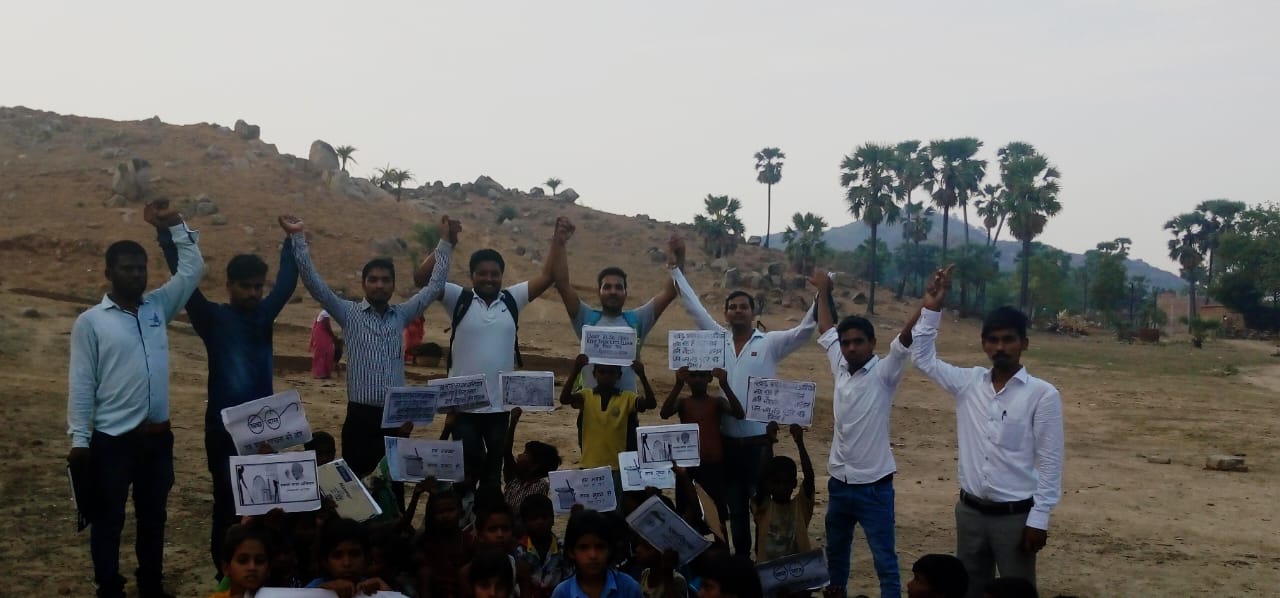
- The Government Of India Initiative, For The "Mission Nature For Future" Has Launched Several Initiatives That Align With The Objectives Of The "Mission Nature For Future" Initiative, Focusing On Environmental Conservation, Sustainability, And Climate Action. Here Are Some Government Initiatives That Support These Goals:
- National Action Plan On Climate Change (Napcc): Launched To Address The Impacts Of Climate Change And Promote Sustainable Development. It Includes Eight National Missions That Focus On Renewable Energy, Energy Efficiency, Sustainable Agriculture, And Climate Adaptation.
- Swachh Bharat Abhiyan (Clean India Mission): Aims To Promote Cleanliness, Sanitation, And Waste Management Across India. The Initiative Encourages Reducing Plastic Waste And Promoting Eco-Friendly Practices.
- National Clean Energy Fund (Ncef): Established To Promote Clean Energy Technology And Help Finance Projects That Reduce Carbon Emissions And Promote Renewable Energy Sources Like Solar And Wind Power.
- Green India Mission: Focuses On Increasing Forest And Tree Cover, Restoring Degraded Ecosystems, And Enhancing Biodiversity To Mitigate Climate Change And Promote Sustainable Natural Resource Management.
- Pradhan Mantri Ujjwala Yojana: Aimed At Providing Clean Cooking Fuel (Lpg) To Rural Households, Reducing Dependence On Traditional Biomass Fuels, And Improving The Health And Well-Being Of Women And Children While Minimizing Environmental Degradation.
- Perform, Achieve, And Trade (Pat) Scheme: Part Of The National Mission On Enhanced Energy Efficiency, The Scheme Promotes Energy Efficiency In Industries And Businesses, Reducing Their Carbon Footprints.
- National Adaptation Fund For Climate Change (Nafcc): Provides Financial Support To States And Union Territories For Climate Change Adaptation Projects, Particularly For Vulnerable Sectors Like Agriculture, Water Resources, And Coastal Areas.
- Biodiversity Action Plan: Focuses On Conserving India's Rich Biodiversity, Protecting Endangered Species, And Restoring Habitats To Ensure Ecological Balance And Sustainability.
- Fame India Scheme (Faster Adoption And Manufacturing Of Hybrid And Electric Vehicles): Encourages The Adoption Of Electric Vehicles To Reduce Air Pollution And Dependence On Fossil Fuels, Contributing To Sustainable Urban Transport Solutions.
- Atal Mission For Rejuvenation And Urban Transformation (Amrut): Focuses On Improving Infrastructure And Creating Green Urban Spaces, With An Emphasis On Water Supply, Waste Management, And Eco-Friendly Urban Planning.
- Pradhan Mantri Krishi Sinchayee Yojana (Pmksy): Aims To Promote Sustainable Irrigation Practices, Reduce Water Wastage, And Increase Agricultural Productivity Through Efficient Water Management Techniques.
- E-Waste Management Rules: Set Guidelines For The Recycling And Disposal Of Electronic Waste To Prevent Environmental Hazards Associated With Improper E-Waste Management.
- These Government Initiatives Play A Crucial Role In Promoting Sustainable Development And Environmental Conservation, Directly Supporting The Objectives Of The Mission Nature For Future Initiative By Aadarsh Yuva Mission Human Welfare India. Together, They Help Address The Global Environmental Challenges And Work Toward A Greener, More Sustainable Future.
- Impact Projection Of Mission Nature For Future

- The "Mission Nature For Future" Initiative By Aadarsh Yuva Mission Human Welfare India Is Projected To Have A Transformative Impact On Both Local Communities And The Environment At Large. Its Focus On Environmental Preservation And Sustainable Practices Is Poised To Create A Ripple Effect That Will Extend Across Generations. By Engaging The Youth, The Initiative Taps Into The Potential Of The Next Generation To Take On Leadership Roles In Addressing Climate Change And Environmental Degradation. This Grassroots Movement Is Expected To Empower Young People With The Knowledge And Tools To Become Advocates For Sustainability In Their Communities, Schools, And Workplaces, Thereby Fostering A Culture Of Environmental Responsibility.
- One Of The Most Significant Impacts Of The Initiative Will Be In Raising Awareness About The Urgent Need For Climate Action And Conservation. Through Educational Campaigns, Workshops, And Local Environmental Projects, It Is Projected That Communities Will Become More Mindful Of Their Ecological Footprint. This Awareness Could Lead To Widespread Adoption Of Sustainable Practices, Such As Waste Segregation, Water Conservation, Energy-Saving Measures, And Responsible Consumption. As A Result, There Would Be A Reduction In The Strain Placed On Natural Resources, And A Decrease In Pollution And Waste Generation, Contributing To Cleaner Air, Water, And Land.
- Additionally, The Initiative's Efforts In Biodiversity Conservation Are Expected To Have Long-Term Benefits For Ecosystems, As Protecting Endangered Species And Preserving Habitats Is Essential For Maintaining Ecological Balance. The Restoration Of Local Ecosystems, Along With The Protection Of Forests, Wetlands, And Other Natural Landscapes, Will Enhance The Resilience Of The Environment To Climate Change, Improve Soil And Water Quality, And Support The Continued Survival Of Diverse Plant And Animal Species.
- On A Broader Scale, The Initiative Aligns With Global Environmental Goals, Contributing To The Achievement Of The United Nations Sustainable Development Goals (Sdgs). By Addressing Climate Change, Reducing Inequalities, And Promoting Sustainable Economic Growth, "Mission Nature For Future" Aims To Be A Crucial Player In Building A More Equitable And Sustainable World. The Widespread Engagement Of Communities And Stakeholders Will Help Drive Systemic Change At Both The Local And Global Levels, Ensuring That Future Generations Inherit A Planet That Is Capable Of Sustaining Life In All Its Forms.
- Overall, The Impact Projection Of "Mission Nature For Future" Is Far-Reaching, With Positive Implications For Environmental Health, Social Equity, And Global Sustainability. By Actively Involving Youth And Fostering A Collective Responsibility Towards Nature, The Initiative Has The Potential To Significantly Shape A Greener, More Sustainable Future For The Planet.
- Impact Metrics For "Mission Nature For Future"
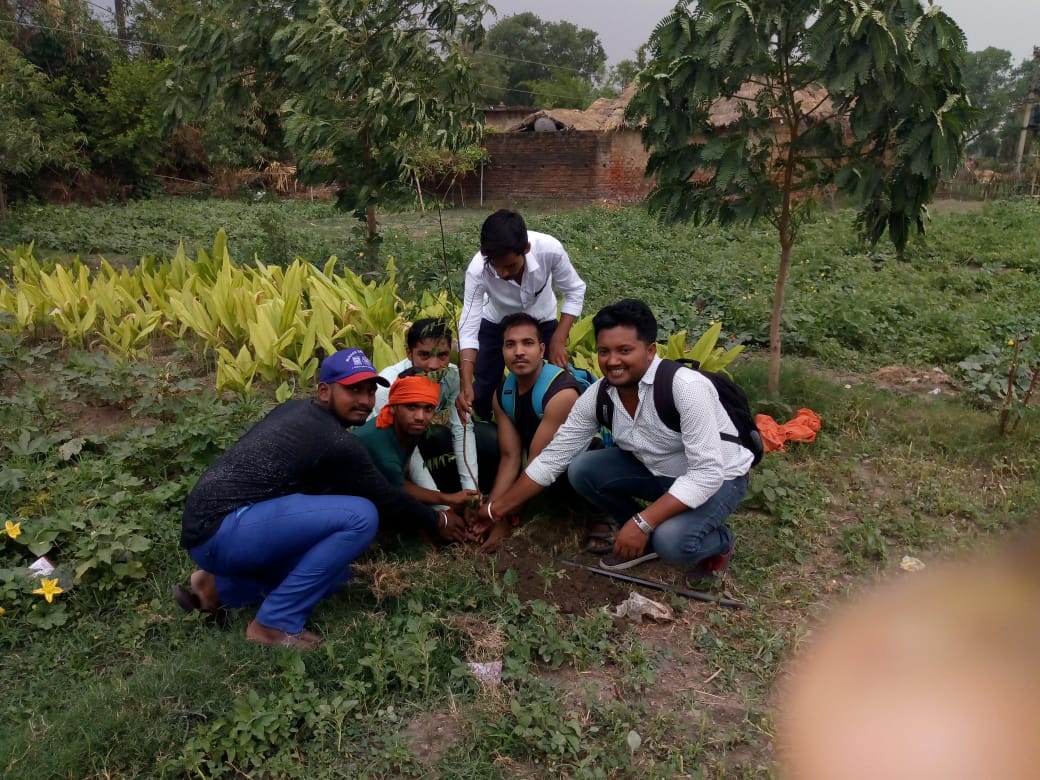
- To Measure The Impact Of The "Mission Nature For Future" Initiative, The Following Impact Metrics Can Be Tracked:
- Environmental Conservation Metrics:
- Area Of Land Reforested: Total Hectares Of Land Restored Or Reforested Through The Initiative’s Activities.
- Number Of Trees Planted: The Number Of Trees Planted In Urban And Rural Areas, Contributing To Reducing Deforestation And Promoting Green Cover.
- Amount Of Waste Recycled/Reduced: The Volume Of Waste Diverted From Landfills Through Recycling And Waste Reduction Campaigns.
- Carbon Footprint Reduction:
- Reduction In Carbon Emissions: The Decrease In Co2 Emissions Due To Efforts Like Promoting Renewable Energy, Sustainable Transportation, And Energy-Efficient Technologies.
- Energy Consumption Savings: The Amount Of Energy Saved Through Efficiency Measures And The Use Of Clean Energy Sources.
- Community Engagement & Awareness:
- Number Of People Reached: The Total Number Of Individuals And Communities Reached Through Educational Campaigns, Workshops, And Awareness Programs.
- Volunteer Participation: The Number Of Volunteers Actively Engaged In Environmental Protection Activities, Such As Tree Planting, Clean-Up Drives, And Advocacy Work.
- School And Youth Engagement: The Number Of Schools, Colleges, And Youth Groups Involved In Environmental Education And Action.
- Biodiversity Impact:
- Species Protected: The Number Of Endangered Or Threatened Species Protected Or Supported Through Conservation Initiatives, Including Habitat Restoration Efforts.
- Biodiversity Preservation Initiatives: The Number Of Conservation Programs For Specific Ecosystems, Such As Wetlands, Forests, And Wildlife Sanctuaries.
- Water Conservation & Quality:
- Water Usage Reduction: The Amount Of Water Saved Or Reused In Communities, Businesses, And Agricultural Practices.
- Water Purification Projects: The Number Of Clean Water Projects Implemented In Underserved Areas, Contributing To Better Water Quality And Accessibility.
- Collaborations And Partnerships:
- Number Of Partnerships Established: The Number Of Partnerships Formed With Government Bodies, Ngos, Businesses, And Other Stakeholders To Drive The Mission's Goals Forward.
- Joint Initiatives Launched: The Number Of Collaborative Environmental Projects Launched With Various Partners.
- Policy Influence & Advocacy:
- Policy Changes Advocated: The Number Of Environmental Policies Or Regulations Influenced Or Supported By The Initiative’s Advocacy Efforts.
- Public Awareness Campaign Impact: Media Coverage, Public Support, And Policy Shifts Resulting From Mass Awareness Campaigns.
- Sustainable Practices Adoption:
- Businesses Adopting Green Practices: The Number Of Local Businesses Or Organizations That Have Adopted Eco-Friendly Practices Like Waste Reduction, Using Renewable Energy, And Minimizing Carbon Emissions.
- Sustainable Agriculture Initiatives: The Number Of Farms Or Agricultural Practices That Have Shifted Towards Sustainability, Such As Organic Farming Or Water-Efficient Irrigation Systems.
- By Tracking These Impact Metrics, Mission Nature For Future Can Assess The Effectiveness Of Its Efforts And Demonstrate Measurable Progress In Creating A More Sustainable Future For Both Local And Global Communities.
- Future Goals Of The "Mission Nature For Future"
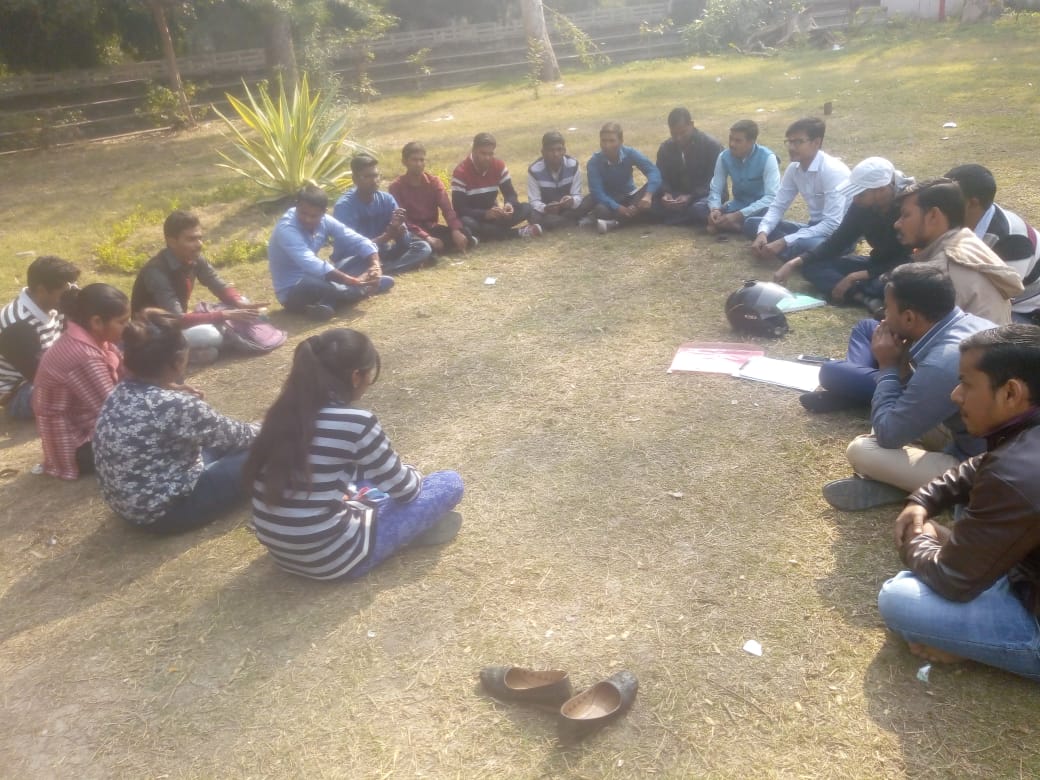
- Reduce Carbon Footprint: Promote The Reduction Of Individual, Corporate, And Community Carbon Footprints Through Awareness And Sustainable Practices.
- Promote Renewable Energy: Advocate For The Adoption Of Clean Energy Sources Like Solar, Wind, And Hydropower Across Communities And Industries.
- Reforestation: Initiate Large-Scale Tree Planting Campaigns To Restore Degraded Ecosystems And Increase Green Cover.
- Combat Deforestation: Raise Awareness About The Dangers Of Deforestation And Work To Prevent It Through Education And Alternative Livelihoods.
- Biodiversity Conservation: Protect Endangered Species And Habitats, Working With Local Communities To Preserve Wildlife.
- Water Conservation: Promote The Sustainable Use And Management Of Water Resources Through Efficient Technologies And Community Education.
- Waste Management: Promote Waste Segregation, Recycling, And Composting At Both Individual And Community Levels.
- Zero Waste Communities: Strive To Establish Zero Waste Communities By Minimizing, Reusing, And Recycling Waste Products.
- Plastic-Free Initiatives: Reduce Plastic Usage By Encouraging Alternatives And Supporting Local Governments In Enforcing Plastic Bans.
- Promote Sustainable Agriculture: Support Organic Farming, Reduce The Use Of Harmful Pesticides, And Promote Eco-Friendly Farming Practices.
- Climate Change Advocacy: Engage In National And Global Advocacy To Push For Effective Policies To Combat Climate Change.
- Urban Green Spaces: Advocate For The Creation Of More Green Spaces In Urban Areas, Like Parks And Community Gardens, To Improve Air Quality And Mental Well-Being.
- Eco-Friendly Infrastructure: Encourage The Design And Construction Of Green Buildings And Sustainable Urban Infrastructure.
- Education And Awareness: Conduct Workshops, Seminars, And Campaigns To Raise Awareness About Environmental Issues Among All Age Groups.
- Plastic Waste Reduction: Increase Efforts To Reduce Plastic Waste, Especially In Urban Areas, Through Effective Disposal And Recycling Systems.
- Sustainable Mobility: Promote The Use Of Public Transportation, Cycling, And Electric Vehicles To Reduce Pollution And Traffic Congestion.
- Local Eco-Entrepreneurship: Encourage Local Businesses To Adopt Sustainable Practices And Provide Support For Green Entrepreneurs.
- Green Technology Promotion: Advocate For The Development And Use Of Green Technologies In Industries Such As Construction, Manufacturing, And Transportation.
- Youth Engagement: Involve Young People In Environmental Action, Encouraging Them To Lead Campaigns, Projects, And Initiatives.
- Community Empowerment: Empower Communities To Take Ownership Of Their Local Environment By Providing Resources, Education, And Support.
- Sustainable Consumption: Promote Responsible Consumption Patterns, Encouraging People To Buy Less, Choose Sustainably, And Reduce Waste.
- Energy Efficiency Programs: Implement Programs To Reduce Energy Consumption In Homes, Businesses, And Communities.
- Conserve Marine Ecosystems: Raise Awareness About The Importance Of Oceans And Work To Protect Marine Life And Reduce Ocean Pollution.
- Support For Climate Refugees: Provide Support For Communities Affected By Climate Change, Including Those Displaced By Natural Disasters.
- Promote Green Finance: Encourage The Financial Sector To Invest In Environmentally Responsible Projects And Businesses.
- Advocate For Eco-Friendly Legislation: Work With Lawmakers To Create And Implement Policies That Protect The Environment, Such As Stricter Emissions Standards And Green Building Codes.
- Sustainable Forestry: Promote Responsible Forestry Practices To Protect Forests From Illegal Logging And Unsustainable Exploitation.
- Promote Green Tourism: Encourage Eco-Friendly Travel And Tourism, Supporting Businesses That Minimize Environmental Impact.
- Foster Global Partnerships: Collaborate With International Organizations And Environmental Groups To Share Knowledge And Resources In Tackling Global Environmental Challenges.
- Establish Green Education Centers: Set Up Educational Centers That Focus On Environmental Sustainability, Offering Courses, Training, And Workshops To Educate Future Generations.
- These Goals Aim To Create A More Sustainable, Healthy, And Equitable Future By Tackling Environmental Challenges Through Collective Action And Awareness.
- Case Studies And Success Stories Of "Mission Nature For Future"

- 1. Tree Plantation Campaigns
- Story: In Partnership With Local Schools And Colleges, Aadarsh Yuva Mission Initiated Large-Scale Tree Plantation Drives Across Several Regions. Over The Span Of A Year, Thousands Of Native Trees Were Planted, Increasing Local Green Cover And Improving Air Quality. Success: Local Wildlife, Including Birds And Insects, Began Returning To These Areas, And The Community Developed A Greater Sense Of Responsibility Towards Nature.
- 2. Waste Management And Recycling Initiatives
- Story: Aadarsh Yuva Mission Launched Waste Segregation And Recycling Programs In Urban And Rural Communities. Volunteers Were Trained To Educate Residents About Separating Biodegradable And Non-Biodegradable Waste. Success: This Led To A Significant Reduction In Landfill Waste, With More Than 60% Of Waste Being Recycled. The Initiative Also Helped Foster Better Waste Management Practices In Schools And Local Businesses.
- 3. Solar Energy Projects In Rural Areas
- Story: As Part Of Their Sustainability Efforts, Aadarsh Yuva Mission Installed Solar Panels In Several Rural Areas, Where Electricity Access Was Limited. Success: These Solar-Powered Installations Provided Clean Energy To Communities, Reducing Reliance On Fossil Fuels And Improving Living Conditions, While Also Educating Rural Populations On Renewable Energy.
- 4. Water Conservation Campaigns
- Story: In Water-Scarce Areas, The Initiative Promoted Rainwater Harvesting And Water Conservation Techniques. Volunteers Set Up Community Workshops And Helped Install Rainwater Harvesting Systems In Homes And Schools. Success: These Efforts Led To A 30% Increase In Water Availability During The Dry Season, Benefiting Over 2,000 Households.
- 5. Clean Energy Advocacy
- Story: Aadarsh Yuva Mission Launched A Campaign To Promote Clean Energy Sources, Such As Wind And Solar Power, By Organizing Awareness Events, Seminars, And Exhibitions. Success: More Than 100 Businesses In The Area Adopted Solar Power, And The Initiative’s Social Media Campaign Reached Millions, Inspiring People To Switch To Cleaner Energy Alternatives.
- 6. Wildlife Conservation Efforts
- Story: The Mission Partnered With Wildlife Organizations To Protect Endangered Species And Restore Natural Habitats, Focusing On Areas With High Biodiversity. Success: The Initiative Helped Increase The Population Of Endangered Species By 20% In The Targeted Areas, Through Habitat Restoration And Anti-Poaching Efforts.
- 7. Community Education Programs
- Story: Through Workshops, School Programs, And Community Meetings, Aadarsh Yuva Mission Educated Over 10,000 People About The Importance Of Conservation And Sustainable Living. Success: These Educational Efforts Resulted In A Measurable Reduction In Local Plastic Usage And An Increased Number Of People Adopting Eco-Friendly Practices.
- 8. Plastic-Free Village Project
- Story: Aadarsh Yuva Mission Identified A Small Village Heavily Affected By Plastic Pollution. They Worked With The Community To Implement A Plastic-Free Initiative, Educating Locals About Alternatives And Organizing Clean-Up Drives. Success: Within Six Months, The Village Became One Of The First In The Region To Be Declared "Plastic-Free," With A 90% Reduction In Plastic Waste.
- 9. Sustainable Agriculture And Eco-Farming
- Story: The Mission Partnered With Local Farmers To Implement Sustainable Farming Practices, Such As Organic Farming, Crop Rotation, And Reduced Chemical Use. Success: The Initiative Helped Improve Soil Health, Increase Crop Yield, And Reduce The Environmental Footprint Of Agriculture, Benefitting Over 500 Farming Families.
- 10. Eco-Friendly Transportation Awareness
- Story: Aadarsh Yuva Mission Organized A Campaign Promoting The Use Of Bicycles And Electric Vehicles As Sustainable Transportation Options. Success: More Than 2,000 People Switched To Eco-Friendly Transportation Methods, Reducing Carbon Emissions And Contributing To Cleaner Air In Urban Areas.
- These Case Studies Represent A Range Of Activities Under The "Mission Nature For Future" Initiative, Showcasing The Positive Impact The Project Is Having On Communities, The Environment, And The Future Of The Planet.
- Conclusions

The "Mission Nature For Future" Initiative By Aadarsh Yuva Mission Human Welfare India Stands As A Transformative Effort In Addressing The Pressing Environmental Challenges Facing Our Planet Today. Through A Multi-Faceted Approach That Includes Tree Plantation, Waste Management, Renewable Energy Advocacy, And Wildlife Conservation, The Initiative Is Creating Tangible Change In Communities Across India. It Seeks To Engage Not Only Local Communities But Also The Youth, Empowering Them To Become Environmental Stewards And Advocates For Sustainability. By Implementing Eco-Friendly Practices Such As Promoting Solar Energy, Water Conservation, And Waste Segregation, The Initiative Is Contributing To A Cleaner, Greener, And More Sustainable Future. - One Of The Key Strengths Of The Mission Is Its Focus On Education And Awareness. Through Workshops, Campaigns, And Hands-On Community Initiatives, Aadarsh Yuva Mission Is Helping People Understand The Importance Of Sustainable Living And The Long-Term Benefits Of Environmental Conservation. The Success Of These Educational Efforts Has Led To Reduced Plastic Usage, Increased Adoption Of Clean Energy, And Greater Participation In Local Conservation Efforts. Moreover, The Initiative's Efforts To Promote Eco-Friendly Alternatives To Daily Practices, Such As The Plastic-Free Village Project And Eco-Friendly Transportation Campaigns, Have Inspired Individuals To Take Personal Responsibility For The Planet’s Well-Being.
- The Long-Term Vision Of Mission Nature For Future Is To Foster A Culture Of Sustainability Where Environmental Consciousness Becomes Second Nature For Every Individual. By Bringing Together Communities, Schools, Businesses, And Governments, The Initiative Is Bridging The Gap Between Knowledge And Action. Ultimately, The Mission Is Not Just About Protecting Nature—It’s About Ensuring That Future Generations Inherit A Planet That Is Capable Of Supporting Life, Providing Resources, And Maintaining Biodiversity. As It Continues To Grow And Evolve, The "Mission Nature For Future" Initiative Is A Beacon Of Hope For A World Where Sustainability Is At The Core Of Global Progress.


